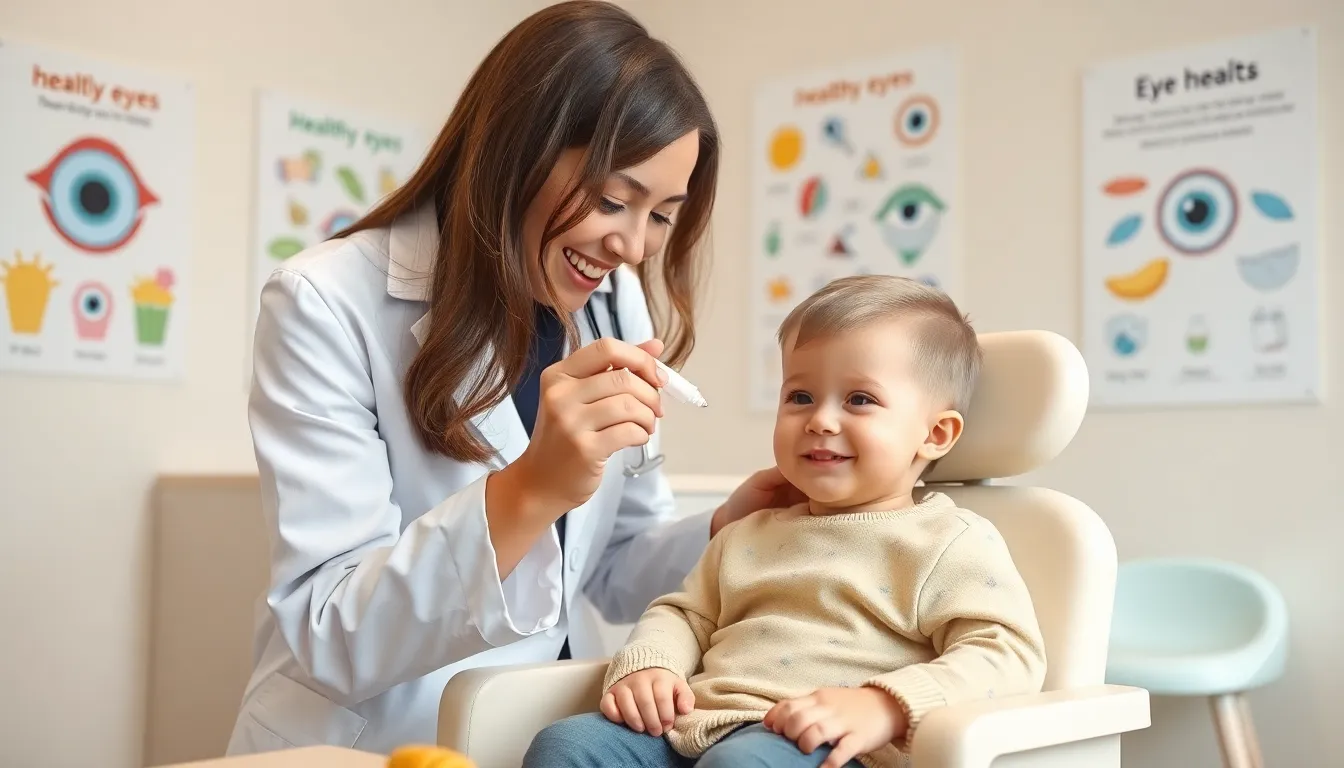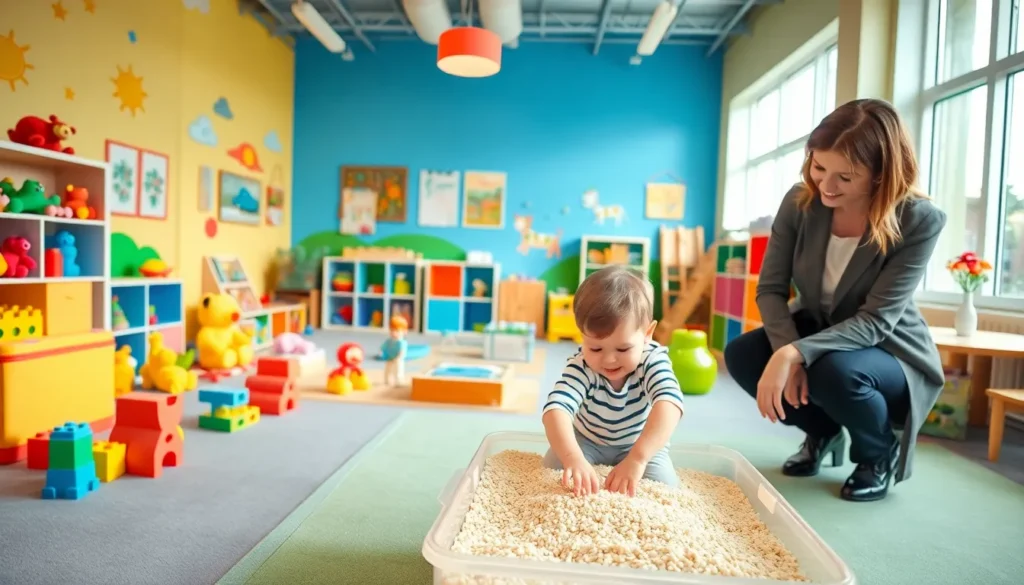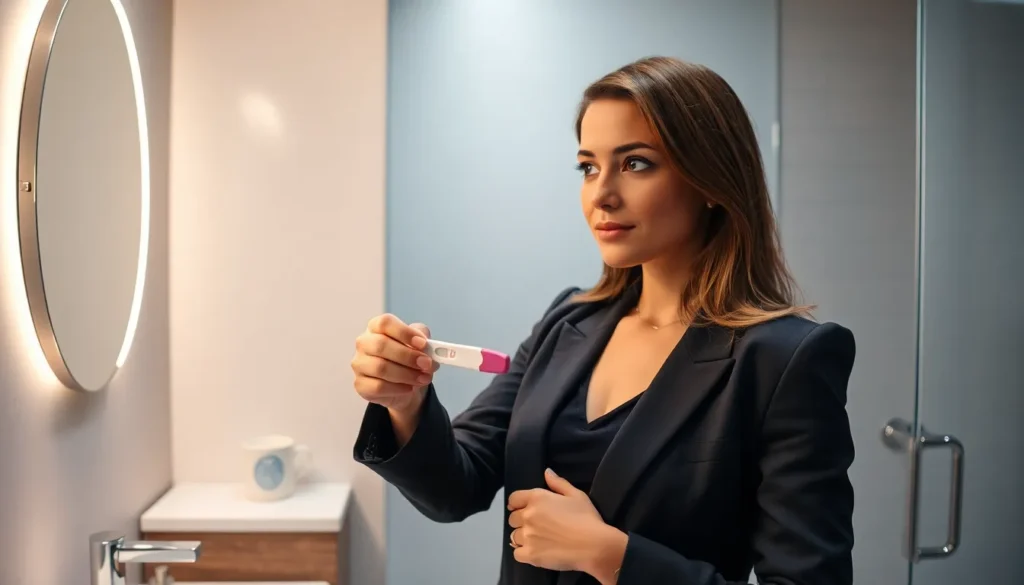When it comes to eye care for toddlers, it’s no surprise that parents might feel a mix of anxiety and confusion. Eye drops? For little ones? It sounds daunting, but fear not. Navigating the world of eye drops for toddlers doesn’t have to be an uphill battle. This guide will provide you with everything you need to know, from understanding eye health to administering those pesky drops with minimal tears. Grab your favorite snack, and let’s immerse.
Table of Contents
ToggleUnderstanding Eye Health In Toddlers

Just like a car needs the right fuel to run smoothly, toddlers require healthy eyes to navigate their vibrant world. Their vision develops rapidly in the early years, and understanding their eye health is crucial. By age three, a child’s vision should be quite clear, but various factors can affect it, such as genetics, environment, and overall health.
Common issues include refractive errors, like nearsightedness or farsightedness, which can lead to squinting or difficulty focusing. Parents should be vigilant in observing their child’s behavior. If they often rub their eyes, struggle to see objects, or show sensitivity to light, it might be time for a checkup. Eye health can impact everything from learning to social interactions, making it essential to keep an eye on those peepers.
Common Eye Conditions Requiring Treatment
Toddlers can face a range of eye conditions, and knowing what to look for can make all the difference. Here are a few common ones:
Conjunctivitis (Pink Eye)
This overly popular toddler ailment is often characterized by redness, discharge, and swelling. It can be viral or bacterial and, while it sounds nasty, eye drops or ointments prescribed by a pediatrician can help.
Allergies
Excel at sneezing? Allergies could be the culprit. Symptoms may include itchy eyes and excessive tearing. Histamine-reducing eye drops can alleviate those uncomfortable moments.
Tear Duct Obstruction
If a toddler’s tears seem to flow without cause, a blocked tear duct might be the issue. While it may sound alarming, many cases resolve themselves and require only gentle massage. Eye drops may be prescribed to aid in healing.
Recognizing these conditions early can help prompt treatment. Parents should feel empowered to consult their child’s pediatrician if any of these signs arise.
Choosing The Right Eye Drops
Before heading to the pharmacy or online store, a quick chat with your pediatrician is a must. Not all eye drops are created equal, especially when it comes to tiny, sensitive eyes. Here are some factors to consider:
- Age Appropriateness: Always check if the drops are suitable for toddlers. Some products are specifically formulated for younger children, while others may not be safe.
- Active Ingredients: Identify the cause of the eye condition: the active ingredient will vary. For instance, antihistamines are great for allergies, while antibiotic drops target bacterial infections.
- Formulation: Consider whether your child is okay with a liquid drop or if a gel would work better.
In short, choosing the right drops involves more than just grabbing what looks good. Parents should make informed choices along with their healthcare provider.
Administering Eye Drops To Toddlers
Now comes the moment of truth: applying those eye drops. But worry not: it can be done with minimal fuss. Here’s a simple step-by-step approach that may help:
Tips For Ensuring Comfort During Application
- Get Cozy: Start the procedure in a comfortable environment. A favorite chair or cuddle time on the couch can work wonders.
- Distraction Techniques: Engage your toddler with their favorite toy, show, or book. Keeping their mind occupied can significantly lessen anxiety.
- Proper Positioning: Laying your child down gently with their head slightly back works best. Alternatively, you can have them sit up, but ensure their head is supported.
- Praise and Reward: Offer plenty of positive reinforcement. A little sticker or extra storytime can turn this scariness into a fun experience.
With preparation, administering eye drops can become less of a nightmare and more of a bonding time. It’s all about creating an environment of trust and comfort.
What To Expect After Administering Eye Drops
Once those drops have found their way into your toddler’s eyes, you might wonder what comes next. Generally, side effects are minimal, but here’s what to keep in mind:
- Immediate Reactions: Your toddler might blink a lot or rub their eyes initially. This is perfectly normal as their eyes adjust to the drops.
- Tearing or Discomfort: A little extra tearing or mild stinging is expected. Keep an eye out for excessive discomfort or prolonged reactions.
- Improvement Timeline: Most conditions should show improvement within a few days. If things don’t seem to get better, a follow-up with the doctor is wise.
Staying vigilant allows parents to tackle any hiccups swiftly, keeping things on the right track for their child’s eye health.
Consulting A Pediatric Ophthalmologist
If issues persist or your instinct says something isn’t right, don’t hesitate to consult a pediatric ophthalmologist. These specialists understand the nuances of children’s eye health and can explore beyond the basics.
- Importance of Early Intervention: Consulting an expert can lead to early detection of more serious conditions. Intervening early often leads to better outcomes for your toddler.
- When to Seek Help: Persistent symptoms, significant discomfort, or unusual behaviors, such as consistent squinting, are all signs worth discussing with a specialist.
By taking these proactive steps, parents can secure a brighter future for their child’s vision.




